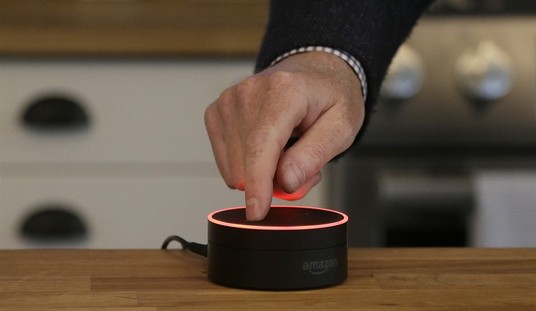Mainstream media routinely dumps undeserved disrespect on two topics: pets and stem cells.
The two topics happen to be linked: Sophisticated stem cell medicine — in which a patient’s own fatty tissue is harvested and processed for the patient’s own adult (autologous) stem cells, then reinjected for regenerative healing — is available in the United States and Canada, but only for animals. Elsewhere in the world — the Regenerative Medicine Institute at Tijuana’s impressive Hospital Angeles, for example, just 20 minutes outside San Diego — adult stem cells have been shown to have remarkable efficacy in treating a variety of diseases.
As a pet advocate with a medical condition that would most efficiently be helped by a simple stem cell procedure, I happen to be personally invested in both subjects. After my dog Sam underwent a procedure pioneered by Vet-Stem in San Diego, I saw first-hand how stem cells can get an arthritic, dejected old K9 walking and genuinely enjoying life again. But even if you don’t give a damn about animals and their welfare, here’s why you should care about stem cells: Because what works for dogs also works for humans, as a long history of scientific testing has shown at great cost to canine life. Because at any time, you or someone you love could develop a condition that diminishes quality of life or actually threatens it, and stem cells could dramatically improve it.
If you’re an American with a nagging medical problem that’s negatively impacting your life, you will have to travel abroad to receive treatment. It’s a costly proposition, as your health insurance provider won’t cover any part of it. Still, many Americans frustrated by declining health and understandably eager to improve their quality of life are booking flights to state-of-the-art facilities where they can expect to receive high-tech treatments (for orthopedic injury, arthritis, multiple sclerosis, spinal injury, COPD, cardiovascular disease, and many other conditions) that American hospitals simply cannot offer.
Many are returning home significantly improved — like Bartolo Colon. Sidelined by a series of arm and shoudler injuries, the pitcher underwent adult stem cell therapy in May in the Dominican Republic. Samples of his fat and bone marrow were processed for his own stem cells, then injected into the afflicted areas of his arm to repair ligament damage and a torn rotator cuff. The procedure had previously been shown to work for sidelined race horses; that was good enough for Colon, who is now at work for the Yankees, in the pink of health, delighting his fans.
But cases like Colon’s tend to sink to the bottom of the media pool, where — if they’re registered at all — they’re covered with an audible tsk-tsk (“Pitcher’s Treatment Draws Scrutiny,” read the disapproving New York Times headline). Or worse, they’re savaged by bottom feeders. In an openly biased and shoddily reported article for MSNBC titled “Stem Cell Clinics Ripping Off Patients, Bullying Scientists,” Arthur Caplan, Ph.D. — director of the Center for Bioethics at the University of Pennsylvania — describes Colon’s experience as “the fringe adventures of the Yankee star.” (Dr. Joseph Purita, the Florida physician who traveled to the Dominic Republic to treat Colon, is not even named.) He also dismisses overseas doctors’ well-documented advances in treating spinal-cord injury as “charlatan claims” and “nonsense.”
Not content to dismiss Colon as a medical tourist, Caplan ridicules the stem-cell industry as “more voodoo than science,” categorically critiquing overseas clinics for “charg[ing] a hefty fee” (as if American doctors offered low-cost services). And, just to make sure his readers won’t have a chance of finding a cure for what ails them, Caplan is careful not to mention these “crackpot” clinics by name — although a quick internet search makes it clear that one facility he references is Panama’s Institute for Cellular Medicine, where documented strides have been made in treating patients with spinal-cord injury, multiple sclerosis, and Duchenne muscular dystrophy.
Sadly, the MSM as a whole may be relied on to display Caplan’s bias against stem cells by burying and/or ridiculing the success stories, even high-profile ones like Colon’s. They don’t bother to mention that in the past five years more than 50,000 scientific studies on stem cells were published and posted in the National Institutes of Health medical library, according to America’s leading adult stem cell scientist Dr. Christian Drapeau (author of Cracking the Stem Cell Code and Stem Cell Theory of Renewal). They ignore extremely reputable facilities such as Hospital Angeles, where patient safety is such a high priority that it has 23 Internal Review Board reviewed treatment protocols. (Under FDA regulations, an IRB is an appropriately constituted group formally designated to review and monitor biomedical research involving human subjects, and it is nearing the completion of its accreditation with the International Cell Medicine Society for offshore [non-U.S.] treatment of chronic disease.)
In fact, the MSM carefully avoids the subject of stem cells — unless, that is, you’re talking embryonic stem cells.
These are the controversial cells, harvested from dead human fetuses, that most people presume to be the foundation of all cell medicine. For the MSM, embryonic stem cells are not voodoo nonsense; they are cool, cutting-edge, sexy. They are headline-grabbers. They have the highly mediagenic property of “pluripotency” — the ability to morph into any type of cell in the body.
But adult stem cells are proven more effective and less risky than embryonic cells. Yet only embryonic stem cells and their supporters merit coverage in the MSM, despite the fact that fetal cells do not perform successfully in clinical trials.
In his article, Caplan staunchly defends the International Society for Stem Cell Research, lamenting its decision to shut down its web site, a portal that did little more than scare visitors away from adult stem cell therapies that might have helped them. He alleges that “some in the industry launched a barrage of legal threats at the ISSCR which, as a small scientific organization, felt it could not afford to fight even if, in the end, they would win.” Caplan doesn’t quote or even mention the ISSCR’s founder, Dr. Irv Weissman, an embryonic cell cheerleader who has been roundly criticized by his clinical peers for purposely ignoring advances made in the area of adult stem cells. I call that extremely biased, not to mention foolish — reporting that presumes and promotes reader ignorance.
The sad reality is that right now American technology’s highest apex is Facebook and Twitter; our medical advances are lagging seriously behind those of other countries — even behind the enormous strides made by veterinary medical researchers right here in the United States. The duty of the MSM should be to report medical advances fairly and accurately, wherever and however they occur, to put pressure on the FDA to approve the use of adult stem cells in American human medical practice. Our country could once again be a world competitor in medicine; re-establishing the United States as a global medical leader can only help our economy by creating jobs and keeping patient spending on our shores.
Until then, Americans motivated to take advantage of the best that modern science has to offer will continue to make travel arrangements for treatment. And for that, they deserve to be applauded as the pioneers they are, not pooh-poohed as medical tourists.









Join the conversation as a VIP Member